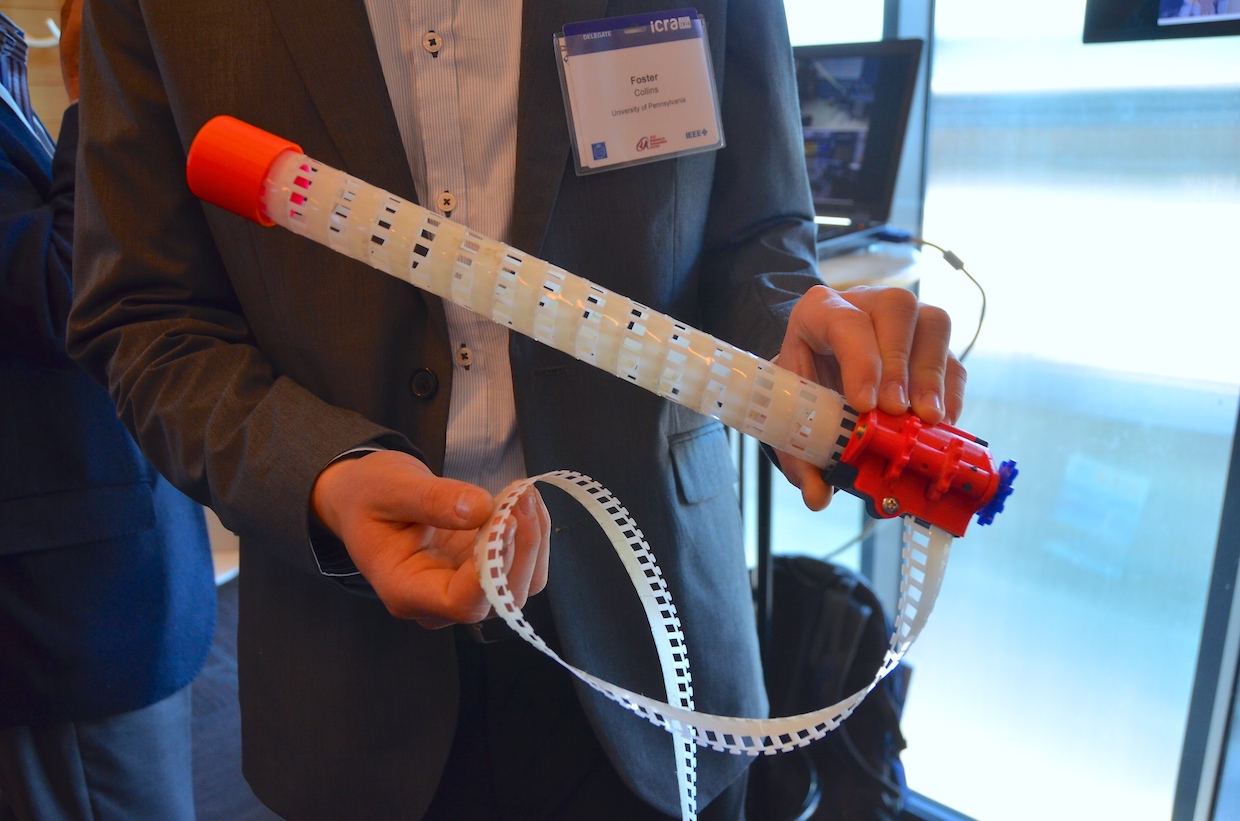
Spiral Zipper Creates Robot Arm Out of a Strip of Plastic
As useful as robot arms are, they tend to be heavy, bulky things that need a bunch of support and structure to get them to work properly. If you need precision and speed, this may be unavoidable, but if all you’re looking for is long reach, a high-strength to weight ratio, and very low cost (which, admittedly, are a lot of things to be looking for), another option was presented at ICRA today by researchers from the University of Pennsylvania: an arm made out of a strip of plastic that zips together with itself, creating an extendable cylinder that can be paired with winches and cables and used for manipulation.
This concept is similar in principle to some commercially available systems like the Zippermast and Spiralift, but both of those designs are heavier and significantly more complicated. The spiral zipper uses a single band that’s made of very lightweight plastic, with a relatively simple meshing mechanism that meshes the teeth on the bottom edge of one wrap with the teeth on the top of the wrap below to create a cylinder that has a very high strength to weight ratio, with exceptionally good compressive performance. And changing the length of the arm is as simple as zipping or unzipping the band: it’s completely reversible, and you can stow the arm almost entirely in a very small volume consisting of the plastic band spooled around the zipping mechanism.
…
“Design of a Spherical Robot Arm With the Spiral Zipper Prismatic Joint,” by Foster Collins and Mark Yim from the GRASP Lab at the University of Pennsylvania, was presented this week at ICRA 2016 in Stockholm, Sweden.
Featured People
Robotics MSE '16 - Mechanical Engineer, Sarcos Corporation
Director, GRASP Lab; Faculty Director, Design Studio (Venture Labs); Asa Whitney Professor, MEAM
